The Belvedere on the Klausberg is a UNESCO cultural heritage site in the Berlin-Potsdam cultural landscape. It is located in the north-western part of the Sanssousi Park.
After the completion of the New Palace, Frederick II planned to make the surrounding area more visually attractive. First, a vineyard with vines and fruit trees was planted on the southern slope of the Klausberg. In addition, a number of buildings were planned. However, only the Dragon House and the Belvedere were completed.

Between 1770 and 1772, the Belvedere was built according to plans by the master builder Georg Christian Unger, which he had drawn up based on Frederick II’s specifications. It was the first brick Belvedere to be built in Potsdam at this time and the last building commissioned by Frederick II. The sole purpose of the building was for visitors to enjoy the beautiful view from there.
Unfortunately, the building was completely destroyed by artillery fire in 1945. For many years, it stood in the park of Sanssouci with only makeshift protection. It was not until 1990 that it could be rebuilt with the help of financial support from a Munich-based corporation.

Walk through the park to the beautiful view
A beautiful path leads from the Orangery Palace to the Belvedere on the Klausberg. The park visitor walks along a tree-lined avenue path that is beautifully shaded, especially in summer.
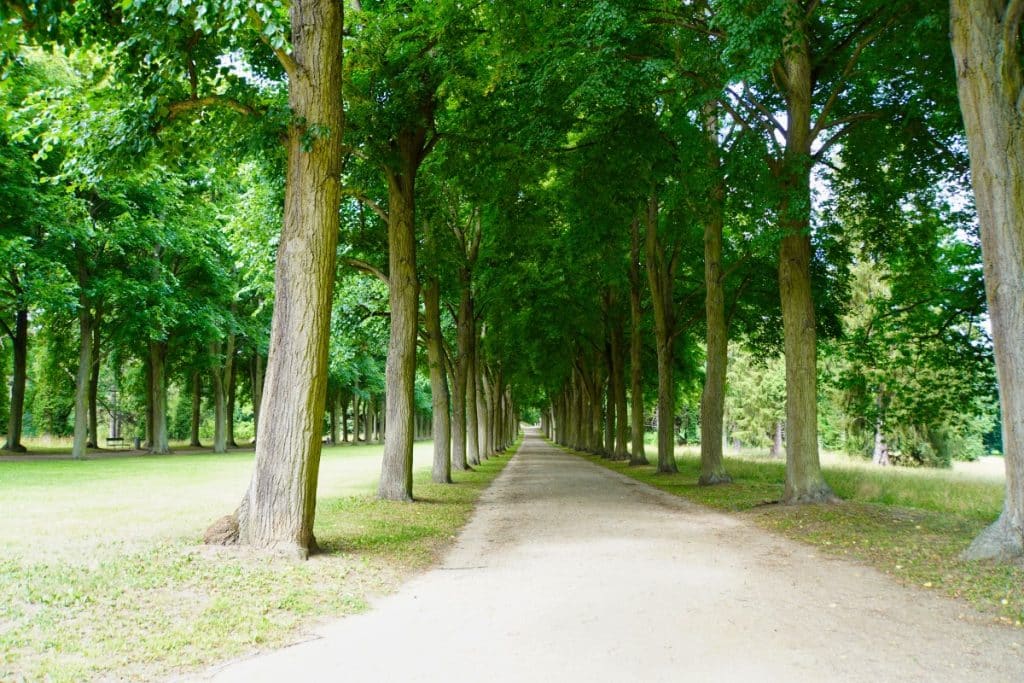
After a while, the first view of the Belvedere on the Klausberg appears between the trees. Even from this spot you can see what a beautifully designed building stands high up on the Klausberg.
Belvedere on the Klausberg
The architect Unger used a drawing by an archaeologist as a model when planning the building. He had tried to depict the imperial palace from ancient Rome on the basis of written records and excavation finds.

Unger had the Belvedere built with a round ground plan like the ancient fountain temple on the drawing. In the lower area, 20 Ionic columns on a circumferential pedestal dominate the overall picture. Above this is a circulation with 20 Corinthian columns.
A balustrade runs around the dome floor, on which 20 figures stand. These represent gods from ancient mythology. The figures were made of sandstone by various sculptors. In the meantime, most of them have been replaced by copies.
On the north side, visitors can climb a double flight of steps. Originally built in an S-shape, it was replaced by a horseshoe-shaped staircase in 1839. In the stairs (i.e. below the steps) Wilhelm II had sideboard and recreation rooms built in for servants, as well as sanitary facilities. This enabled him to also use the place for small receptions or meetings.

Today, this staircase leads to the large French windows. Unfortunately, it is only possible to enter the building during special events. But you can look in through some of the windows. The interior has not yet been fully restored. Originally, in the 18th century, the lower round hall had a wall covering of white and grey marble, and the floor was decorated with grey marble slabs laid in a star shape. The ceiling was made of white stucco marble. The room originally had sixteen carved, gilded table chairs with red leather seat cushions.
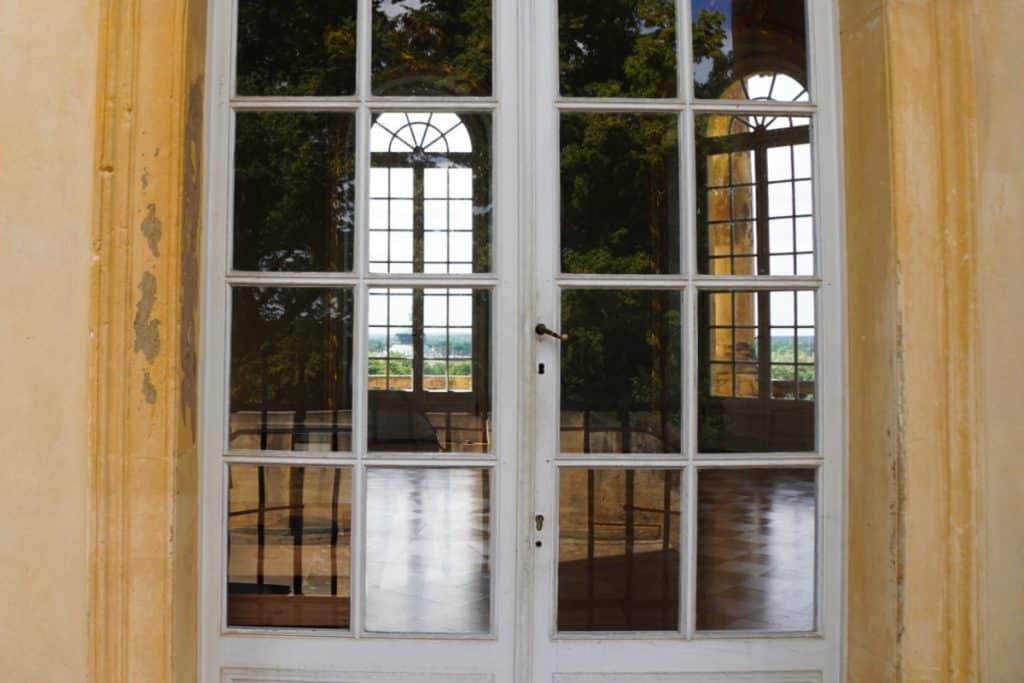
The upper round hall has already been restored. The walls have been decorated with a green stucco marble. The French windows are framed by gilded ornaments. The floor is laid out in a trapezoidal shape with wood. There is said to be a ceiling painting in this room, which has been reconstructed with the help of a black-and-white photograph. As in the lower hall, the furnishings here consisted of sixteen carved, gilded table chairs upholstered in green to match the wall colour.

Don’t miss the view of the Belvedere on the Klausberg from below the vineyard before the tour takes you on further explorations of Sanssouci Park.
Address:
Belvedere auf dem Klausberg
Maulbeerallee
14469 Potsdam
Opening hours:
Open only during special events. From the outside, you can visit the Belvedere during the park’s opening hours.
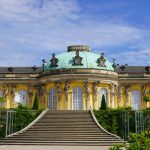


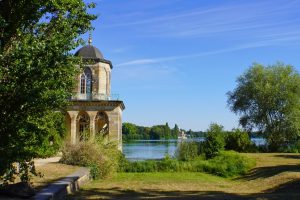


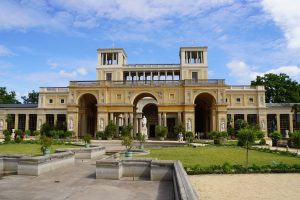









Leave a Reply